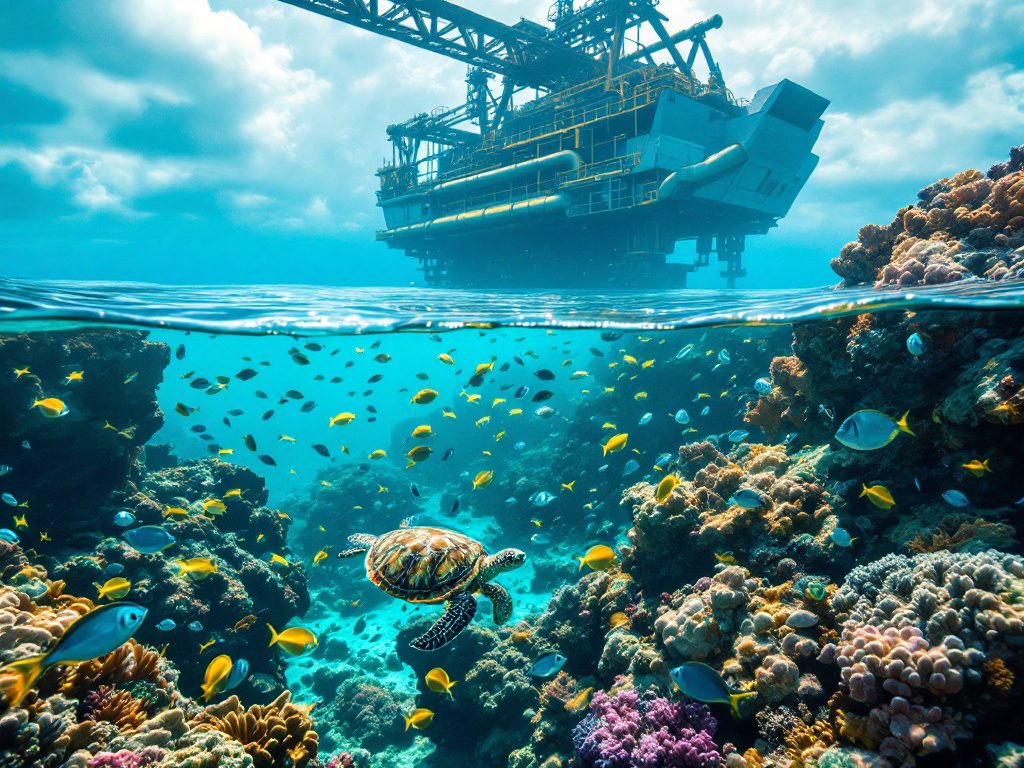The Metals Company Makes Waves with Deep-Sea Permit Push
Some stories emerge from the deep with more questions than answers. On April 29, 2025, TMC, The Metals Company Inc., plunged into the turbulent waters of ocean politics by applying to the National Oceanic and Atmospheric Administration (NOAA) for commercial recovery and two exploration licenses under the U.S. Deep Seabed Hard Mineral Resources Act (DSHMRA). TMC aims to extract critical metals—nickel, copper, cobalt, and manganese—found in the resource-rich Clarion-Clipperton Zone, a vast swath of the Pacific between Hawaii and Mexico. These elements are touted as vital for clean energy technology, high-performance batteries, and national defense.
This aggressive bid comes as Washington intensifies its drive for mineral independence, following a Trump-era executive order calling for accelerated domestic mineral extraction. TMC’s proposed commercial permit covers 25,160 square kilometers, while the two exploration licenses target another 199,895 square kilometers. Both numbers speak to staggering ambition and tremendous ecological stakes for the future of American industry and the Pacific Ocean alike.
Market enthusiasm was immediate. TMC shares surged 8.7% in pre-market trading after the announcement, reflecting not just investor hope but a growing sense among Wall Street that the so-called “critical minerals rush” has finally reached U.S. shores. Yet behind the bullish forecasts—some analysts predict a $5.95 price target within a year—there’s an undercurrent of skepticism. According to TipRanks’ AI analyst ‘Spark,’ TMC’s financial stability remains shaky: persistent net losses, negative earnings, and precarious cash flows point to a company betting its future on a high-stakes regulatory roll of the dice.
Bypassing Global Agreements: Economic Promise or Environmental Peril?
At first glance, deep-sea mining offers an enticing promise: independence from foreign mineral supply chains and a shot at technological parity with China, which dominates global battery material markets. Yet a closer look reveals TMC is testing the limits of international cooperation—and environmental patience—by exploiting overlap between U.S. national law and the uneasy patchwork of global ocean governance.
The zones TMC has sought to mine aren’t new territory. The company already explored some of these vast undersea regions under sponsorship from the small island nation of Nauru via the International Seabed Authority (ISA) framework—a global system rooted in the United Nations Convention on the Law of the Sea (UNCLOS). By now seeking permits through NOAA under U.S. legal code, TMC stands accused by critics of trying to skirt more rigorous, consensus-based international oversight in favor of what many see as a fast-track, corporate-friendly process.
This maneuver has ignited fierce resistance. No less than 32 countries and numerous Indigenous Pacific groups have openly opposed commercial exploitation within the Clarion-Clipperton Zone, stressing the ethical and ecological costs of deep-sea mining before robust science can measure the impact. Greenpeace USA’s Deep Sea Mining campaign lead, Arlo Hemphill, minced no words, decrying TMC’s approach as “plunder of the Pacific” undertaken without the free, prior, and informed consent of Pacific Peoples.
“What we’re witnessing is a calculated race to industrialize the last untouched corners of our planet, headed by corporate actors with questionable accountability—while communities that actually live with the ocean’s consequences cry out to be heard.”
Don’t mistake this for mere activist hyperbole. According to Harvard marine biologist Dr. Sylvia Earle, the science surrounding deep-sea ecosystem recovery is “alarmingly incomplete”—damage to fragile benthic habitats could prove irreversible for millennia. Our appetite for more batteries and electric vehicles must be weighed against fundamental questions of ocean stewardship and Indigenous sovereignty that resonate far beyond the coral reefs of the Pacific. The Clarion-Clipperton Zone, as highlighted in a recent Nature editorial, harbors one of the world’s largest unstudied reservoirs of marine life, many of which could be lost before they’re even discovered.
Chasing Green Progress: Can Industry Outrun Its Shadow?
Policy debates in the U.S. Congress have begun to mirror public unease. With the White House now prioritizing “critical mineral security,” lawmakers face a profound dilemma: Do short-term technology needs justify potentially centuries-long harm to our oceans? The National Academy of Sciences underscored this clash, noting in a 2023 report that “robust regulatory safeguards and baseline ecosystem studies are prerequisites—not optional add-ons—for responsible seabed mining.” Yet TMC’s pursuit of U.S. permits appears tailored to avoid precisely these burdensome, caution-oriented protocols.
Why not simply slow down? Supporters argue that delaying would mean ceding ground to nations with weaker environmental standards—an argument as old as American resource extraction. But history offers sobering context. From the unchecked logging booms of the nineteenth century to the oil shale bonanza of the 1970s, the U.S. repeatedly learned, too late, that favoring speed over stewardship comes at immense ecological and social cost. The Pacific’s unique tapestry of cultural heritage—from Indigenous navigation routes to sacred fishing grounds—now stands in the balance, with too many local voices sidelined for the sake of global battery wars.
Beyond that, TMC’s fragile finances and regulatory gambit expose broader risks. As reported by Bloomberg, the company’s economic models remain speculative, tied as much to mineral speculation as to genuine operational viability. “Outperform” brokerage ratings gloss over the real possibility that the venture could collapse under the weight of litigation, community resistance, or volatile commodity markets.
Is there a middle path? Some environmental economists suggest the answer lies in international reforms—closing loopholes that allow corporate forum-shopping, boosting investments in recycling battery metals, and, most importantly, putting affected Indigenous communities at the center of any decision-making process. Equality, respect for cultural diversity, and true environmental responsibility—these are the standards that must steer us. Without them, the race to mine the deep sea looks less like green progress and more like a retread of old, extractive mistakes with the ocean as collateral damage.

